 Search by Keyword
|
“RAIN”
(John Lennon – Paul McCartney)
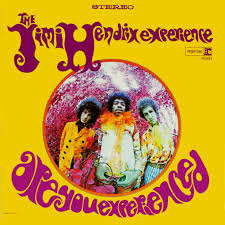 “It was the first time that we had used a backward voice on a track. The first backwards tape on any record anywhere. Before (Jimi) Hendrix, before The Who, before any f*cker. Maybe there was that record about ‘They’re Coming To Take Me Away, Ha Haaa!’; maybe that came out before ‘Rain,’ but it’s not the same thing.” “It was the first time that we had used a backward voice on a track. The first backwards tape on any record anywhere. Before (Jimi) Hendrix, before The Who, before any f*cker. Maybe there was that record about ‘They’re Coming To Take Me Away, Ha Haaa!’; maybe that came out before ‘Rain,’ but it’s not the same thing.”
This quote from John Lennon in reference to The Beatles’ song “Rain” is typical of his persona in many ways. He was usually quite proud at being the “first” at something and understandably so, The Beatles being the first at many things in popular music. Also, his keen observation of what was going on in the music business at the time (that is, the competition) surfaces in his above statement.
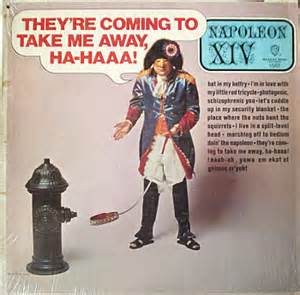 Interestingly, the 1966 novelty hit “They’re Coming To Take Me Away, Ha Haaa!” by Napoleon XIV (aka Jerry Samuels) did in fact have as its b-side “aaaH-aH ,yawA eM ekaT oT gnimoC er'yehT,” which was a literal backwards version of the record's a-side. While this clever trick enthused a lot of record buyers, not to mention annoying customers in an establishment with a jukebox, it was hardly the innovation that The Beatles concocted for their b-side to their 1966 smash hit “Paperback Writer.” As John said, it was “not the same thing.” Interestingly, the 1966 novelty hit “They’re Coming To Take Me Away, Ha Haaa!” by Napoleon XIV (aka Jerry Samuels) did in fact have as its b-side “aaaH-aH ,yawA eM ekaT oT gnimoC er'yehT,” which was a literal backwards version of the record's a-side. While this clever trick enthused a lot of record buyers, not to mention annoying customers in an establishment with a jukebox, it was hardly the innovation that The Beatles concocted for their b-side to their 1966 smash hit “Paperback Writer.” As John said, it was “not the same thing.”
And, to settle the issue, the Napoleon XIV single was released in July of 1966, while the “Rain” single came out in the US in May of that year. So, once again, The Beatles were indeed first!
Songwriting History
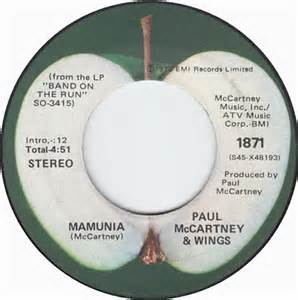 “This is a song I wrote about people who are always moaning about the weather all the time,” Lennon stated, “you know, whatever it is, it’s OK, it’s meant to be.” Paul concurs: “Songs have traditionally treated rain as a bad thing and what we got on to was that it’s no bad thing. There’s no greater feeling than the rain dripping down your back.” He later reprised this positive opinion in his Wings song “Mamunia,” which contains the lyric “you never felt the rain, my friend, till you felt it running down your back.” “This is a song I wrote about people who are always moaning about the weather all the time,” Lennon stated, “you know, whatever it is, it’s OK, it’s meant to be.” Paul concurs: “Songs have traditionally treated rain as a bad thing and what we got on to was that it’s no bad thing. There’s no greater feeling than the rain dripping down your back.” He later reprised this positive opinion in his Wings song “Mamunia,” which contains the lyric “you never felt the rain, my friend, till you felt it running down your back.”
 While John Lennon’s above quote credits himself entirely for composing "Rain," as he also did during his 1972 “Hit Parader” interview, Paul insists that he definitely played a part in writing the song. The book “Many Years From Now” quotes Paul as saying: “’Rain’ was a co-effort with the leaning slightly towards John. I don’t think he brought the original idea, just when we sat down to write, he kicked it off…tilted 70-30 to John.” While John Lennon’s above quote credits himself entirely for composing "Rain," as he also did during his 1972 “Hit Parader” interview, Paul insists that he definitely played a part in writing the song. The book “Many Years From Now” quotes Paul as saying: “’Rain’ was a co-effort with the leaning slightly towards John. I don’t think he brought the original idea, just when we sat down to write, he kicked it off…tilted 70-30 to John.”
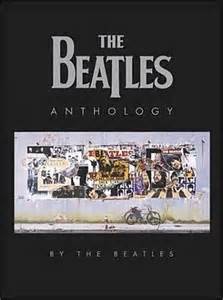 Also, in the book “Anthology,” Paul states in regard to writing as well as recording the song: "I don’t think ‘Rain was just John’s. We sat down and wrote it together. It was John’s vocal and John’s feel on the song, but what gave it its character was collaboration. I think it’s all too easily said: ‘It’s a John song. It’s a Paul song.’ That’s a fallacy. There were certain songs that were very much mine and there were others that were definite collaborations with John, where we’d actually sit down and spend three hours. Then there were ones that were very much John’s." Also, in the book “Anthology,” Paul states in regard to writing as well as recording the song: "I don’t think ‘Rain was just John’s. We sat down and wrote it together. It was John’s vocal and John’s feel on the song, but what gave it its character was collaboration. I think it’s all too easily said: ‘It’s a John song. It’s a Paul song.’ That’s a fallacy. There were certain songs that were very much mine and there were others that were definite collaborations with John, where we’d actually sit down and spend three hours. Then there were ones that were very much John’s."
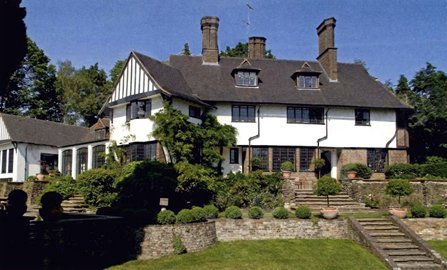 "I think it roughly splits somewhere down the middle," adds McCartney. "I suppose the way things did go was that each of us would say, ‘Mine’s “Strawberry Fields,” and yours is “Penny Lane”.’ That did start to happen, but before then, on things like ‘Rain,’ it was that we all wanted to do it. It wasn’t only John who wanted to make that kind of record. It was probably just that we’d all get an excuse to do it on his track." At any rate, it appears that the song was another product of a songwriting session between John and Paul at Lennon’s Kenwood home sometime around March of 1966, regardless of how much Paul was involved in the songwriting process. "I think it roughly splits somewhere down the middle," adds McCartney. "I suppose the way things did go was that each of us would say, ‘Mine’s “Strawberry Fields,” and yours is “Penny Lane”.’ That did start to happen, but before then, on things like ‘Rain,’ it was that we all wanted to do it. It wasn’t only John who wanted to make that kind of record. It was probably just that we’d all get an excuse to do it on his track." At any rate, it appears that the song was another product of a songwriting session between John and Paul at Lennon’s Kenwood home sometime around March of 1966, regardless of how much Paul was involved in the songwriting process.
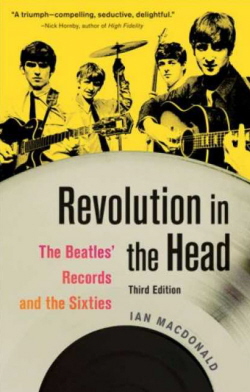 As for their lyrical inspiration, a whole lot has been written, and understandably so, about their indoctrination into both the drug culture and Eastern philosophies of the time. In his book "Psychedelia And Other Colours, author Rob Chapman writes: "'Rain' reduces (Lennon's) razor-sharp intellect to childlike awe...It's an acid convert's joy at seeing rain for the first time and marvelling at its essence." Also, Ian MacDonald’s 1994 book titled “Revolution In The Head” states the following: “The song’s ‘rain’ and ‘sun’ are physical phenomena experienced in a condition of heightened consciousness, the record portraying a state of mind in which one is peacefully at home in an integrated universe.” This is quite a departure from the escape into the “mind” that was depicted in their 1963 composition “There’s A Place.” As for their lyrical inspiration, a whole lot has been written, and understandably so, about their indoctrination into both the drug culture and Eastern philosophies of the time. In his book "Psychedelia And Other Colours, author Rob Chapman writes: "'Rain' reduces (Lennon's) razor-sharp intellect to childlike awe...It's an acid convert's joy at seeing rain for the first time and marvelling at its essence." Also, Ian MacDonald’s 1994 book titled “Revolution In The Head” states the following: “The song’s ‘rain’ and ‘sun’ are physical phenomena experienced in a condition of heightened consciousness, the record portraying a state of mind in which one is peacefully at home in an integrated universe.” This is quite a departure from the escape into the “mind” that was depicted in their 1963 composition “There’s A Place.”
Recording History
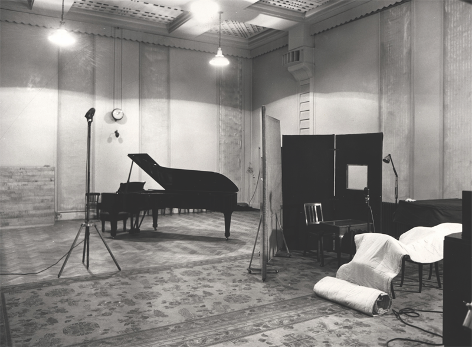 On April 14th, 1966, this being day six of recording sessions for what became their “Revolver” album, The Beatles entered EMI Studio Three to work on two compositions that would not be on that album but released as their next single. The first session of the day, running from 2:30 to 7:30 pm, was devoted to completing the a-side of the single, “Paperback Writer,” and then, after an hour break, they returned to begin work on “Rain,” which would be the b-side. On April 14th, 1966, this being day six of recording sessions for what became their “Revolver” album, The Beatles entered EMI Studio Three to work on two compositions that would not be on that album but released as their next single. The first session of the day, running from 2:30 to 7:30 pm, was devoted to completing the a-side of the single, “Paperback Writer,” and then, after an hour break, they returned to begin work on “Rain,” which would be the b-side.
 Before the group began work on the rhythm track for the song "Rain," an important recording technique was implemented. Engineer Geoff Emerick recalls: “One of the things we discovered when playing around with loops on ‘Tomorrow Never Knows’ was that the texture and depth of certain instruments sounded really good when slowed down. With ‘Rain,’ The Beatles played the rhythm track really fast so that when the tape was played back at normal speed everything would be so much slower, changing the texture. If we’d recorded it at normal speed and then had to slow the tape down whenever we wanted to hear a playback it would have been much more work…It all seems very simple now and, of course, tricks like this are very easily accomplished in today’s computers, but in 1966 it was a pretty revolutionary technique, one that we would repeatedly use to great effect on Beatles recordings." In this instance, it appears that Geoff Emerick's recollections were incorrect. The Beatles recorded the rhythm track for "Rain" at the standard speed of 50 kilocycles per second, the intention being to reduce the speed of the tape for overdubs. Before the group began work on the rhythm track for the song "Rain," an important recording technique was implemented. Engineer Geoff Emerick recalls: “One of the things we discovered when playing around with loops on ‘Tomorrow Never Knows’ was that the texture and depth of certain instruments sounded really good when slowed down. With ‘Rain,’ The Beatles played the rhythm track really fast so that when the tape was played back at normal speed everything would be so much slower, changing the texture. If we’d recorded it at normal speed and then had to slow the tape down whenever we wanted to hear a playback it would have been much more work…It all seems very simple now and, of course, tricks like this are very easily accomplished in today’s computers, but in 1966 it was a pretty revolutionary technique, one that we would repeatedly use to great effect on Beatles recordings." In this instance, it appears that Geoff Emerick's recollections were incorrect. The Beatles recorded the rhythm track for "Rain" at the standard speed of 50 kilocycles per second, the intention being to reduce the speed of the tape for overdubs.
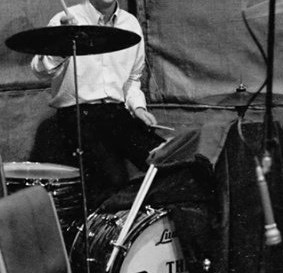 “The drums became a giant drum kit,” McCartney explained. "If you slow down a footstep it becomes a giant’s footstep, it adds a few tons to the weight of the person. So we got a big, ponderous, thunderous backing and then we worked on top of that as normal, so that it didn’t sound like a slowed-down thing, it just had a big ominous noise to it. It was nice, I really enjoyed that one." Producer George Martin stated: "There are various reasons for doing the different speed things. One was to get a different drum sound. If you've recorded the track faster and then slowed it down, Ringo's toms would sound a bit more cavernous." “The drums became a giant drum kit,” McCartney explained. "If you slow down a footstep it becomes a giant’s footstep, it adds a few tons to the weight of the person. So we got a big, ponderous, thunderous backing and then we worked on top of that as normal, so that it didn’t sound like a slowed-down thing, it just had a big ominous noise to it. It was nice, I really enjoyed that one." Producer George Martin stated: "There are various reasons for doing the different speed things. One was to get a different drum sound. If you've recorded the track faster and then slowed it down, Ringo's toms would sound a bit more cavernous."
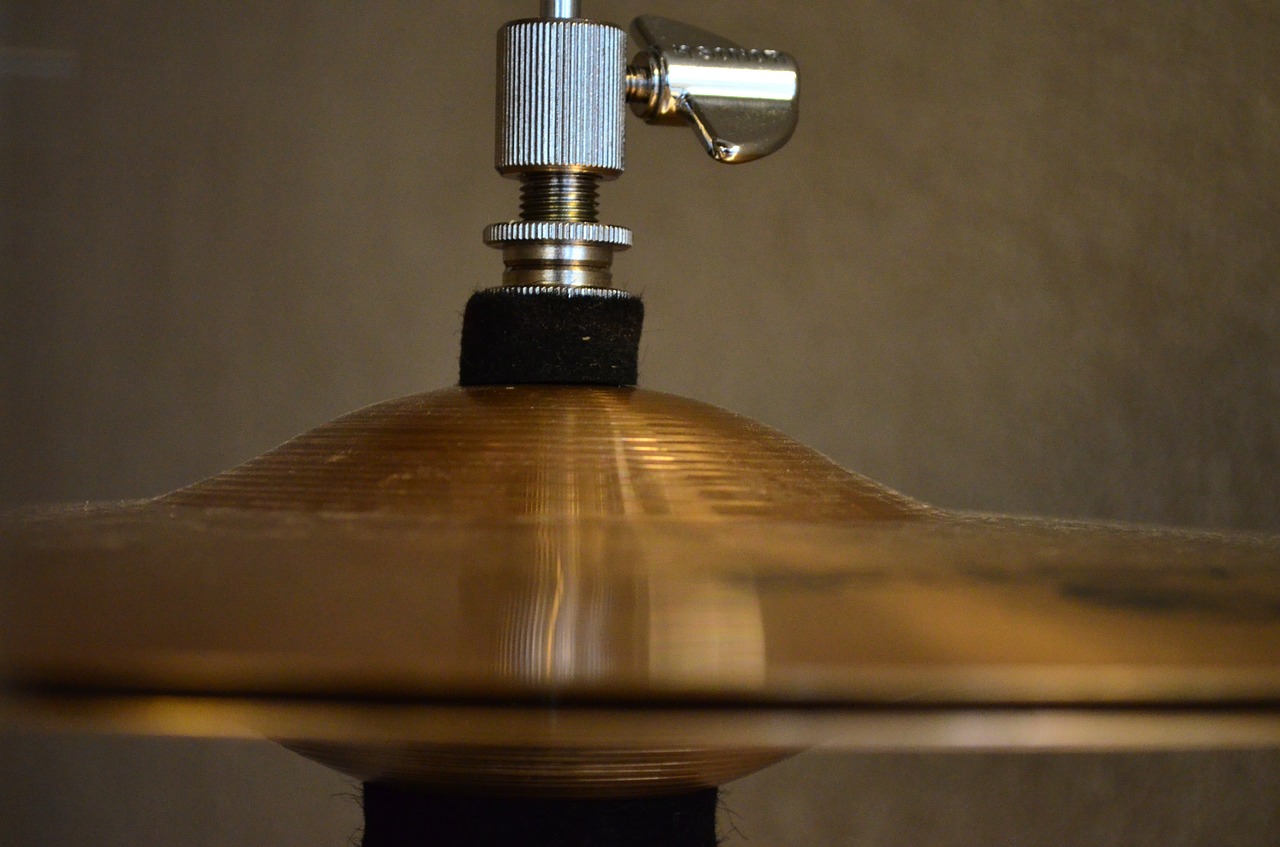 Someone else who proudly enjoyed the recording was Ringo Starr: “My favorite piece of me is what I did on ‘Rain.’ I think I just played amazing! I was into the snare and hi-hat. I think it was the first time I used this trick of starting a break by hitting the hi-hat first instead of going directly to a drum off the hi-hat. I think it’s the best out of all the records I’ve ever made. ‘Rain’ blows me away…I feel as though that was someone else playing – I was possessed!” Someone else who proudly enjoyed the recording was Ringo Starr: “My favorite piece of me is what I did on ‘Rain.’ I think I just played amazing! I was into the snare and hi-hat. I think it was the first time I used this trick of starting a break by hitting the hi-hat first instead of going directly to a drum off the hi-hat. I think it’s the best out of all the records I’ve ever made. ‘Rain’ blows me away…I feel as though that was someone else playing – I was possessed!”
 Five takes of the rhythm track were recorded during this five hour evening session (from 8:30 pm to 1:30 am the next morning) which featured John and George on electric guitars, Paul on bass and a “possessed” Ringo on drums. John and George's guitars and Ringo's drums were recorded onto track one of the four-track tape, Paul's bass possibly being captured on track two, their intention being to overdub a new bass track utilizing the new technology instituted earlier in that day's session for "Paperback Writer." (See "Recording History" section for "Paperback Writer" for details.) Five takes of the rhythm track were recorded during this five hour evening session (from 8:30 pm to 1:30 am the next morning) which featured John and George on electric guitars, Paul on bass and a “possessed” Ringo on drums. John and George's guitars and Ringo's drums were recorded onto track one of the four-track tape, Paul's bass possibly being captured on track two, their intention being to overdub a new bass track utilizing the new technology instituted earlier in that day's session for "Paperback Writer." (See "Recording History" section for "Paperback Writer" for details.)
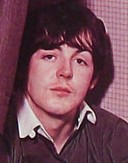 Only "take five" of these rhythm track takes were complete, all of them being performed in the key of A major. Author Kevin Howlett's liner notes for the "Revolver" 2022 reissue specify the rhythm track being played in B-flat major, but the performance as well as increased speed of the original recording indicates otherwise. Also, Kevin Howlett wrote that John and Paul played electric guitar during this rhythm track instead of George Harrison, this undoubtedly being a continuation of the fact of Paul playing lead guitar on the rhythm track of "Paperback Writer," this being substantiated by an actual quote from Paul confirming that he performed this guitar part. There is no quote indicating Paul as playing electric guitar on "Rain" instead of George, so such conjecture from Kevin Howlett, nor the guitar performances heard on the song "Rain," indicate George sitting out on this rhythm track. Only "take five" of these rhythm track takes were complete, all of them being performed in the key of A major. Author Kevin Howlett's liner notes for the "Revolver" 2022 reissue specify the rhythm track being played in B-flat major, but the performance as well as increased speed of the original recording indicates otherwise. Also, Kevin Howlett wrote that John and Paul played electric guitar during this rhythm track instead of George Harrison, this undoubtedly being a continuation of the fact of Paul playing lead guitar on the rhythm track of "Paperback Writer," this being substantiated by an actual quote from Paul confirming that he performed this guitar part. There is no quote indicating Paul as playing electric guitar on "Rain" instead of George, so such conjecture from Kevin Howlett, nor the guitar performances heard on the song "Rain," indicate George sitting out on this rhythm track.
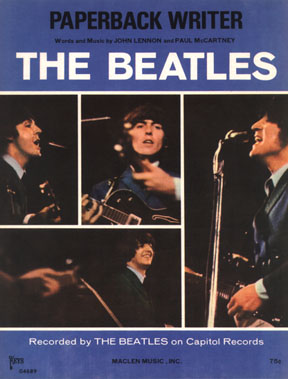 On to "take five" was overdubed Paul's bass, utilizing the same technology used on "Paperback Writer" that hightened the bass frequencies. This was recorded onto track two of the four-track tape, Paul performing his bass part in the key of A major with the tape running at the standard speed of 50 kilocycles per second. This version was featured on 2022 Deluxe editions of "Revolver," but with the tape running a bit faster than it was originally recorded. After this was accomplished, Lennon recorded two overdubs of his lead vocals with the tape machine running at 42 kilocycles onto both tracks three and four of the four-track tape, slowing the tempo and key of the song to G major. Echo was added to track four, the resulting recording at 42 kilocycles also being a feature of the 2022 Deluxe editions of "Revolver." On to "take five" was overdubed Paul's bass, utilizing the same technology used on "Paperback Writer" that hightened the bass frequencies. This was recorded onto track two of the four-track tape, Paul performing his bass part in the key of A major with the tape running at the standard speed of 50 kilocycles per second. This version was featured on 2022 Deluxe editions of "Revolver," but with the tape running a bit faster than it was originally recorded. After this was accomplished, Lennon recorded two overdubs of his lead vocals with the tape machine running at 42 kilocycles onto both tracks three and four of the four-track tape, slowing the tempo and key of the song to G major. Echo was added to track four, the resulting recording at 42 kilocycles also being a feature of the 2022 Deluxe editions of "Revolver."
 Geoff Emerick, as quoted in the 1988 book “The Beatles Recording Sessions,” explained: “An offshoot of ADT (Artificial Double Tracking) was that we had a big audio oscillator to alter the frequency of the tape machines. We would drive it through a power amp and the power amp would drive the capstan wheel and enable you to speed up or slow down the machine at will. John, or George if it was his song, used to sit in the control room on mixes and actually play the oscillator.” In this case, the desired result was a quickly recorded rhythm track played against a slowly recorded vocal track – another Beatles first! Geoff Emerick, as quoted in the 1988 book “The Beatles Recording Sessions,” explained: “An offshoot of ADT (Artificial Double Tracking) was that we had a big audio oscillator to alter the frequency of the tape machines. We would drive it through a power amp and the power amp would drive the capstan wheel and enable you to speed up or slow down the machine at will. John, or George if it was his song, used to sit in the control room on mixes and actually play the oscillator.” In this case, the desired result was a quickly recorded rhythm track played against a slowly recorded vocal track – another Beatles first!
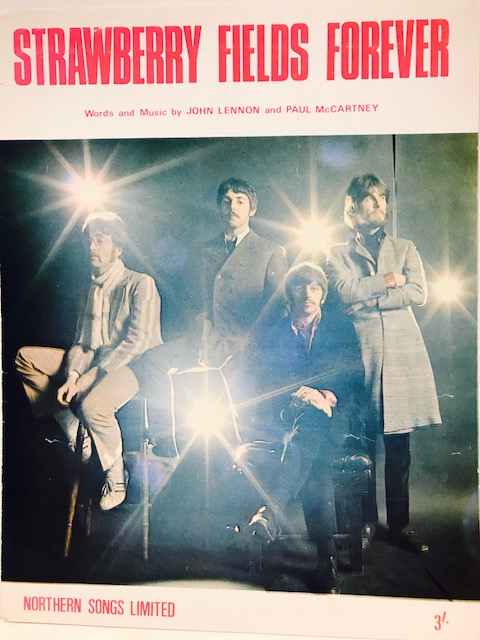 Before the recording session was completed on this day, two reduction mixes of "take five" were made with the tape being played back at 42 kilocycles to another tape. The second of these reduction mixes, called "take eight," had the rhythm track and Paul's bass combined to track one, with both tracks of John's vocals combined to track three, John's experimental vocal tracks being recorded at the standard speed of 50 kilocycles as the rhythm track was recorded, this presenting his vocals in the slowed-down presentation as heard on the later part of "Strawberry Fields Forever" later that year. The reduction mix that was deemed best on this day was "take seven," which consisted of the rhythm track on track one, Paul's bass on track two, and John's two vocal tracks recorded at the slowed down 42 kilocycles on track three. Before the recording session was completed on this day, two reduction mixes of "take five" were made with the tape being played back at 42 kilocycles to another tape. The second of these reduction mixes, called "take eight," had the rhythm track and Paul's bass combined to track one, with both tracks of John's vocals combined to track three, John's experimental vocal tracks being recorded at the standard speed of 50 kilocycles as the rhythm track was recorded, this presenting his vocals in the slowed-down presentation as heard on the later part of "Strawberry Fields Forever" later that year. The reduction mix that was deemed best on this day was "take seven," which consisted of the rhythm track on track one, Paul's bass on track two, and John's two vocal tracks recorded at the slowed down 42 kilocycles on track three.
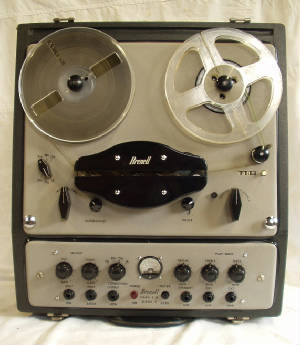 This completed the work for the day and the group was gone by 1:30 am. First, though, John wanted something to take home with him. “Because (John) and the other three Beatles owned Brenell recorders,” recalls Geoff Emerick, “they were able to take open-reel tapes home with them whenever they wanted to listen to works in progress. (So, when) we recorded the backing track and vocal to ‘Rain,’ John asked for a rough mix and Phil dutifully ran a copy off for him.” This completed the work for the day and the group was gone by 1:30 am. First, though, John wanted something to take home with him. “Because (John) and the other three Beatles owned Brenell recorders,” recalls Geoff Emerick, “they were able to take open-reel tapes home with them whenever they wanted to listen to works in progress. (So, when) we recorded the backing track and vocal to ‘Rain,’ John asked for a rough mix and Phil dutifully ran a copy off for him.”
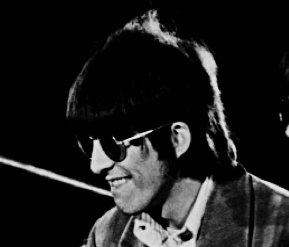 “Usually if we were working on a song we’d take a little rough mix of it home,” George recalls. “It was always on a reel-to-reel…We were halfway through ‘Rain’ when we left the studio at night, so John said, ‘Can I have a rough mix of that?’ In those days they made a three or four-inch spool, the copy tape. That means they would play the rough mix onto a little spool, and when they finished they would cut the tape off and hand it to you in a box so the tail was sticking out – it’s called ‘tails out.’ John didn’t know that at the time (I don’t think I knew it, either), so when he got home he threaded it on his machine as if it were ‘heads out,’ and played it. He heard the song backwards, and heard enough to think, ‘Wow, amazing!’ It obviously gave him a buzz because he came in raving about it the next morning, and so we experimented” “Usually if we were working on a song we’d take a little rough mix of it home,” George recalls. “It was always on a reel-to-reel…We were halfway through ‘Rain’ when we left the studio at night, so John said, ‘Can I have a rough mix of that?’ In those days they made a three or four-inch spool, the copy tape. That means they would play the rough mix onto a little spool, and when they finished they would cut the tape off and hand it to you in a box so the tail was sticking out – it’s called ‘tails out.’ John didn’t know that at the time (I don’t think I knew it, either), so when he got home he threaded it on his machine as if it were ‘heads out,’ and played it. He heard the song backwards, and heard enough to think, ‘Wow, amazing!’ It obviously gave him a buzz because he came in raving about it the next morning, and so we experimented”
 In 1969, Lennon himself explained the event. "I took the tracks home to see what gimmicks I could add, because the song wasn’t quite right. I got home from the studio stoned out of my mind on marijuana and, as usual, I listened to what I’d recorded that day. Somehow I got it on backwards and I sat there, transfixed, with the earphones on, with a big hash joint. I ran in the next day and said, ‘I know what to do with it, I know…Listen to this!’ So I made them all play it backwards." In Paul's book "The Lyrics," he writes: "One of the things about The Beatles is that we noticed accidents. Then we acted upon them. When we had a tape playing backwards by accident, we would stop and go, 'What is that?' A lot of other people would go, 'Oh God, what is that bloody noise?' But we always loved being sidetracked by these ideas." In 1969, Lennon himself explained the event. "I took the tracks home to see what gimmicks I could add, because the song wasn’t quite right. I got home from the studio stoned out of my mind on marijuana and, as usual, I listened to what I’d recorded that day. Somehow I got it on backwards and I sat there, transfixed, with the earphones on, with a big hash joint. I ran in the next day and said, ‘I know what to do with it, I know…Listen to this!’ So I made them all play it backwards." In Paul's book "The Lyrics," he writes: "One of the things about The Beatles is that we noticed accidents. Then we acted upon them. When we had a tape playing backwards by accident, we would stop and go, 'What is that?' A lot of other people would go, 'Oh God, what is that bloody noise?' But we always loved being sidetracked by these ideas."
The next day in question was actually two days later, April 16th, 1966, this time in EMI Studio Two, an eleven-hour session utilized to complete the song. With all the experimenting and overdubbing to be done, these were eleven hours well spent.
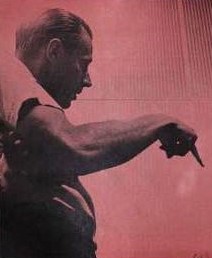 Geoff Emerick details the events that began that session. “John marched into the control room, tape in hand, and demanded that we all listen to his ‘incredible’ discovery. George Martin tried to explain what had happened, but the ever-impatient Lennon didn’t care. All he knew was that this was the sound he wanted for the song’s fadeout and he was off to have a cuppa: getting it accomplished was our job. So George had me copy the track of John’s singing the last verse (from track three of the four-track tape) onto our two-track machine. I then instructed Phil (McDonald) to turn the copy over so it would play backwards, and we flew it into the multitrack at the proper spot (at the conclusion of track three of the four-track tape). Lennon was thrilled with the result. From that point on, The Beatles got backwards fever: almost every overdub we did on ‘Revolver’ had to be tried backwards as well as forwards.” Geoff Emerick details the events that began that session. “John marched into the control room, tape in hand, and demanded that we all listen to his ‘incredible’ discovery. George Martin tried to explain what had happened, but the ever-impatient Lennon didn’t care. All he knew was that this was the sound he wanted for the song’s fadeout and he was off to have a cuppa: getting it accomplished was our job. So George had me copy the track of John’s singing the last verse (from track three of the four-track tape) onto our two-track machine. I then instructed Phil (McDonald) to turn the copy over so it would play backwards, and we flew it into the multitrack at the proper spot (at the conclusion of track three of the four-track tape). Lennon was thrilled with the result. From that point on, The Beatles got backwards fever: almost every overdub we did on ‘Revolver’ had to be tried backwards as well as forwards.”
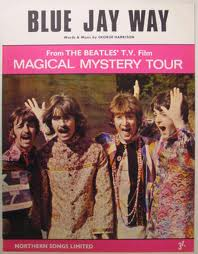 John Lennon apparently wanted more than what he ended up receiving. "The next day, I went in and I said...’Why don’t we have the whole of the song again, you know, backwards?’ We didn’t do that, but we just laid my voice track and guitar track over the last half-minute backwards. You can hear it at the end. It sounds as if I’m singing Indian." Despite John's excitement concerning backwards vocals on this day, the only other time this was used on a Beatles recording was the stereo mix of George's "Blue Jay Way" the following year (unless you count John's reversed phrase "It's turned out nice again" heard at the conclusion of their 1995 track "Free As A Bird"). John Lennon apparently wanted more than what he ended up receiving. "The next day, I went in and I said...’Why don’t we have the whole of the song again, you know, backwards?’ We didn’t do that, but we just laid my voice track and guitar track over the last half-minute backwards. You can hear it at the end. It sounds as if I’m singing Indian." Despite John's excitement concerning backwards vocals on this day, the only other time this was used on a Beatles recording was the stereo mix of George's "Blue Jay Way" the following year (unless you count John's reversed phrase "It's turned out nice again" heard at the conclusion of their 1995 track "Free As A Bird").
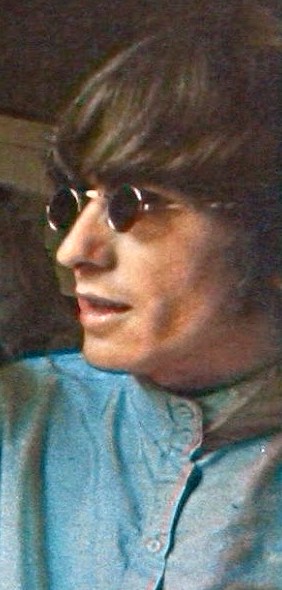 Lennon may not have gotten the whole song backwards, but he did receive backwards guitars thrown in per his suggestion. George Harrison explains: "We turned the tape over and put it on backwards, and then played some guitar notes to it. I think he and I both plugged in guitars, just playing some little bits, guessing, hoping it fitted in. George Martin turned the master upside down and played it back. We were excited to hear what it sounded like, and it was magic – the backwards guitarist! The way the note sounded, because of the attack and decay, was brilliant. We got very excited and started doing that on overdub. And then there was a bit of backwards singing as well, which came out sounding like Indian singing." The reversed vocals that were peiced together from John's lead vocal on track three consisted of "When the sun shines / Rain / If the rain comes, they run and hide their heads." Lennon may not have gotten the whole song backwards, but he did receive backwards guitars thrown in per his suggestion. George Harrison explains: "We turned the tape over and put it on backwards, and then played some guitar notes to it. I think he and I both plugged in guitars, just playing some little bits, guessing, hoping it fitted in. George Martin turned the master upside down and played it back. We were excited to hear what it sounded like, and it was magic – the backwards guitarist! The way the note sounded, because of the attack and decay, was brilliant. We got very excited and started doing that on overdub. And then there was a bit of backwards singing as well, which came out sounding like Indian singing." The reversed vocals that were peiced together from John's lead vocal on track three consisted of "When the sun shines / Rain / If the rain comes, they run and hide their heads."
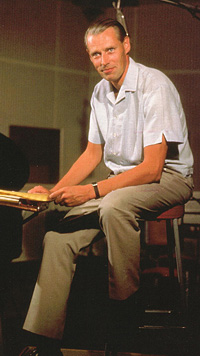 Despite the multiple accounts of how these backwards effects were suggested for use in this song, George Martin insists otherwise. He explained: “I was always playing around with tapes, and I thought it might be fun to do something extra with John’s voice. So I lifted a bit of his main vocal off the four-track, put it onto another spool, turned it around and then slid it back and forth until it fitted. Lennon was out at the time but when he came back he was amazed…They all thought it was marvelous...I thought that the backwards stuff would help it. I think the attraction of it was being unreal. When you have all the consonants backwards, it gives a dreamlike appeal to the song, which I guess is why John liked it so much. He was always a dreamer." Despite the multiple accounts of how these backwards effects were suggested for use in this song, George Martin insists otherwise. He explained: “I was always playing around with tapes, and I thought it might be fun to do something extra with John’s voice. So I lifted a bit of his main vocal off the four-track, put it onto another spool, turned it around and then slid it back and forth until it fitted. Lennon was out at the time but when he came back he was amazed…They all thought it was marvelous...I thought that the backwards stuff would help it. I think the attraction of it was being unreal. When you have all the consonants backwards, it gives a dreamlike appeal to the song, which I guess is why John liked it so much. He was always a dreamer."
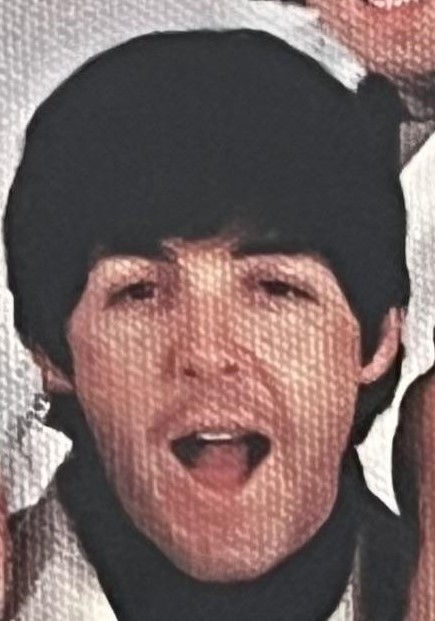 As detailed in the 2022 Deluxe editions of "Revolver," Kevin Howlett explains what was overdubbed onto the only open track, this being track four before John's backwards vocals: "John, Paul and George sang the answering harmony vocals "'When the sun shines down...' 'When the rain comes down...' 'When it rains and shines...'): Paul sang a high harmony on the streched-out 'Rain,' 'I don't mind,' 'shine' and 'the weather's fine.' Ringo played tambourine throughout the addition of these vocal parts." As detailed in the 2022 Deluxe editions of "Revolver," Kevin Howlett explains what was overdubbed onto the only open track, this being track four before John's backwards vocals: "John, Paul and George sang the answering harmony vocals "'When the sun shines down...' 'When the rain comes down...' 'When it rains and shines...'): Paul sang a high harmony on the streched-out 'Rain,' 'I don't mind,' 'shine' and 'the weather's fine.' Ringo played tambourine throughout the addition of these vocal parts."
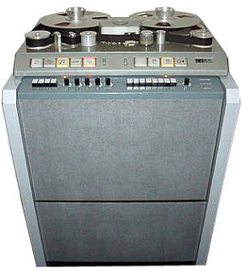 This marked the end of the recording process by the band, attention then being paid to creating a suitable mono mix on that day, no doubt because they were quite pleased with the progress made and were excited to hear a finished product. These mono mixes were created using “take seven,” which means that whatever they attempted as overdubs for "take eight," such as John's slower "Strawberry Fields Forever" -like vocals and possibly the above mentioned backward guitar overdubs, were deemed unworthy for the finished product. This marked the end of the recording process by the band, attention then being paid to creating a suitable mono mix on that day, no doubt because they were quite pleased with the progress made and were excited to hear a finished product. These mono mixes were created using “take seven,” which means that whatever they attempted as overdubs for "take eight," such as John's slower "Strawberry Fields Forever" -like vocals and possibly the above mentioned backward guitar overdubs, were deemed unworthy for the finished product.
 Four mono mixes were attempted at this late hour by George Martin with engineers Geoff Emerick and Phil McDonald, all four with varying degrees of ADT added to the vocal track in experimentation. The third mono mix ended up being picked as the worldwide mono release of the song. Since it ended up not being included on the “Revolver” album, "Rain" didn't initially receive a stereo mix as all singles were in mono at that point in history. Therefore, at 1:30 am the following morning, the session was complete as was their next soon-to-be-released single. Four mono mixes were attempted at this late hour by George Martin with engineers Geoff Emerick and Phil McDonald, all four with varying degrees of ADT added to the vocal track in experimentation. The third mono mix ended up being picked as the worldwide mono release of the song. Since it ended up not being included on the “Revolver” album, "Rain" didn't initially receive a stereo mix as all singles were in mono at that point in history. Therefore, at 1:30 am the following morning, the session was complete as was their next soon-to-be-released single.
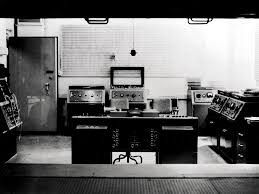 A stereo mix was not made until December 2nd, 1969, this occurring in the EMI Studio Two control room and created by the same EMI staff of George Martin, Geoff Emerick and Phil McDonald as well as Richard Lush as 2nd engineer. The reason for this stereo mix at this point in time was the imminent US release of the Apple album “Hey Jude” which was the first result of the deal made between The Beatles’ new manager Allen Klein and Capitol Records. The album was only to be released in stereo and was to include “Rain,” hence the re-assembly of the original EMI team to create the stereo mix. “I was glad that the record company was giving us the opportunity to run off new mixes from the original multitrack tapes,” Geoff Emerick explains, “instead of subjecting them to the pseudo-stereo processing that marred so many early Capitol releases." A stereo mix was not made until December 2nd, 1969, this occurring in the EMI Studio Two control room and created by the same EMI staff of George Martin, Geoff Emerick and Phil McDonald as well as Richard Lush as 2nd engineer. The reason for this stereo mix at this point in time was the imminent US release of the Apple album “Hey Jude” which was the first result of the deal made between The Beatles’ new manager Allen Klein and Capitol Records. The album was only to be released in stereo and was to include “Rain,” hence the re-assembly of the original EMI team to create the stereo mix. “I was glad that the record company was giving us the opportunity to run off new mixes from the original multitrack tapes,” Geoff Emerick explains, “instead of subjecting them to the pseudo-stereo processing that marred so many early Capitol releases."
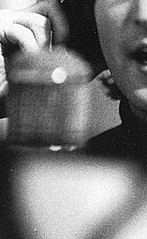 Only one stereo mix was attempted, which centered the rhythm track (track one) and placed the overdubbed bass track (track two) slightly to the right. Lennon’s lead vocals on track three (including the backwards final moments) are placed entirely in the left channel while the tambourine and background vocals of track four are entirely in the right channel. The song also fades a little sooner and ends a couple seconds before the mono mix does. Beatles fans were enthused to hear the song in stereo, but Geoff Emerick has gone on record as saying he was unimpressed by the results, saying that the song was “recorded with the intention of being released on vinyl (that is, as a mono single), and as far as I am concerned, that is the way (it) should be heard." Only one stereo mix was attempted, which centered the rhythm track (track one) and placed the overdubbed bass track (track two) slightly to the right. Lennon’s lead vocals on track three (including the backwards final moments) are placed entirely in the left channel while the tambourine and background vocals of track four are entirely in the right channel. The song also fades a little sooner and ends a couple seconds before the mono mix does. Beatles fans were enthused to hear the song in stereo, but Geoff Emerick has gone on record as saying he was unimpressed by the results, saying that the song was “recorded with the intention of being released on vinyl (that is, as a mono single), and as far as I am concerned, that is the way (it) should be heard."
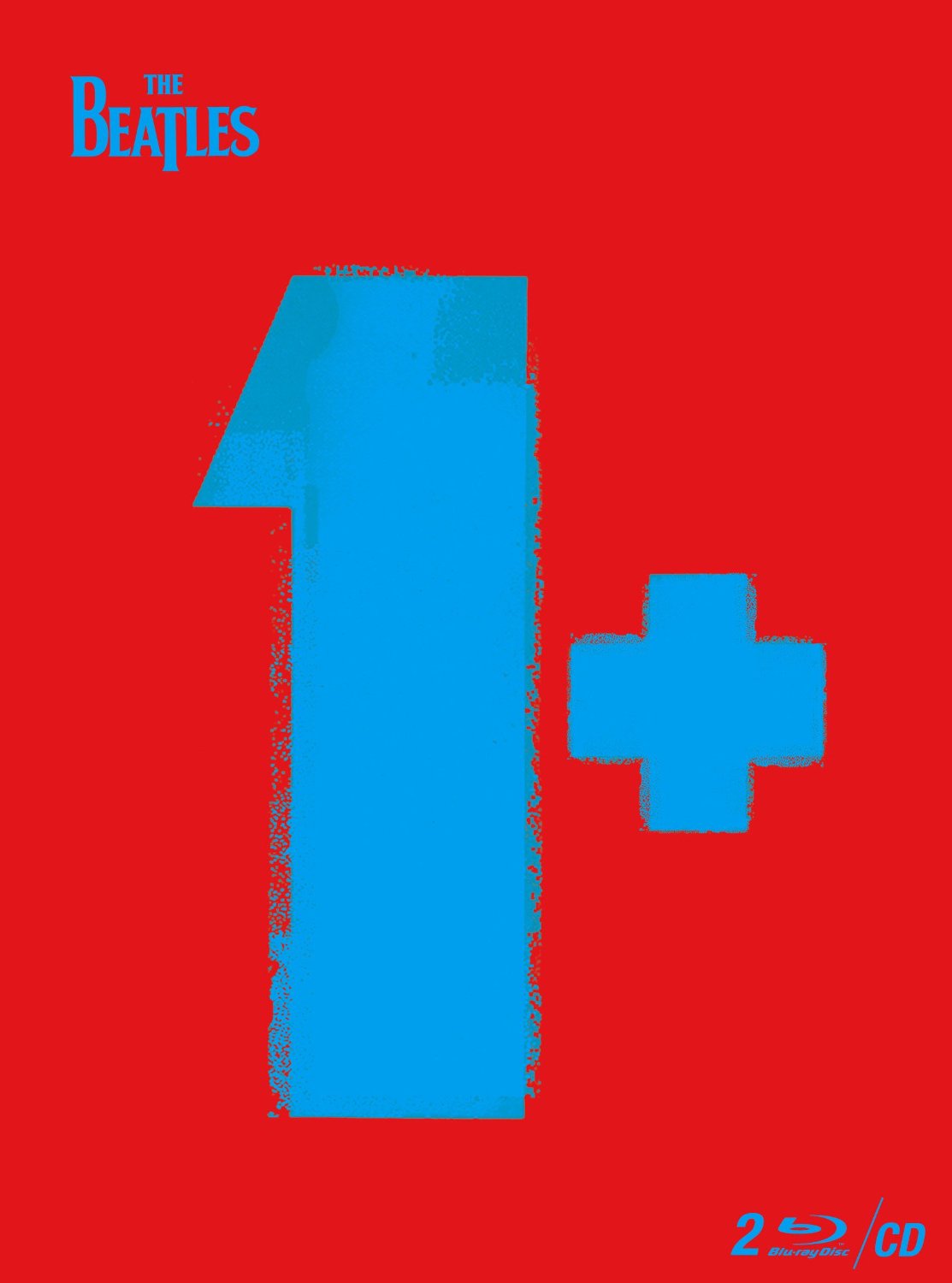 The situation was remedied somewhat in 2015. Giles Martin (son of George Martin) and Sam Okell revisited the master tapes in Abbey Road Studios to create a new stereo mix of "Rain" to be used on the DVD/Blu-ray set of Beatles videos contained in the box set "Beatles 1+." The elements of the recording are placed in the mix with less drastic seperation and, because of the latest technological procedures, the sound is immaculate. Unfortunately, this mix can only be heard while viewing the "Rain" videos contained in the DVD or Blu-ray set. The situation was remedied somewhat in 2015. Giles Martin (son of George Martin) and Sam Okell revisited the master tapes in Abbey Road Studios to create a new stereo mix of "Rain" to be used on the DVD/Blu-ray set of Beatles videos contained in the box set "Beatles 1+." The elements of the recording are placed in the mix with less drastic seperation and, because of the latest technological procedures, the sound is immaculate. Unfortunately, this mix can only be heard while viewing the "Rain" videos contained in the DVD or Blu-ray set.
 Giles Martin and engineer Sam Okell returned once again to the original four-track tape of "Rain" to create yet another stereo mix, this being included in the 2022 editions of "Revolver." While they were at it, they created a mix of the original rhythm track and bass overdub from April 14th, 1966 (sped up slightly faster than originally recorded) and a slowed down mix with early double-tracked Lennon vocals recorded at 42 kilocycles per second. Giles Martin and engineer Sam Okell returned once again to the original four-track tape of "Rain" to create yet another stereo mix, this being included in the 2022 editions of "Revolver." While they were at it, they created a mix of the original rhythm track and bass overdub from April 14th, 1966 (sped up slightly faster than originally recorded) and a slowed down mix with early double-tracked Lennon vocals recorded at 42 kilocycles per second.
Song Structure and Style
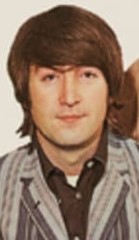 Although both sides of this mid-1966 single are heard in the same key, the relaxed feel of “Rain” makes a nice contrast to the tightly-wound quick-paced structure of “Paperback Writer.” Despite all of the experimental procedures utilized in the recording process as detailed above, the framework of “Rain” is actually very rudimentary when in comparison to the structurally complex formats the group had been using of late. These results are remarkably satisfying, suggesting that sometimes "less is more." The structure used here ends up as ‘verse/ verse/ refrain/ verse/ refrain/ verse/ outro’ (or aababac) with a subtle introduction thrown in. Having reached the three-minute mark without an instrumental break, and probably not wanting to breach the unwritten AM airplay rule, a solo was left off. Although both sides of this mid-1966 single are heard in the same key, the relaxed feel of “Rain” makes a nice contrast to the tightly-wound quick-paced structure of “Paperback Writer.” Despite all of the experimental procedures utilized in the recording process as detailed above, the framework of “Rain” is actually very rudimentary when in comparison to the structurally complex formats the group had been using of late. These results are remarkably satisfying, suggesting that sometimes "less is more." The structure used here ends up as ‘verse/ verse/ refrain/ verse/ refrain/ verse/ outro’ (or aababac) with a subtle introduction thrown in. Having reached the three-minute mark without an instrumental break, and probably not wanting to breach the unwritten AM airplay rule, a solo was left off.
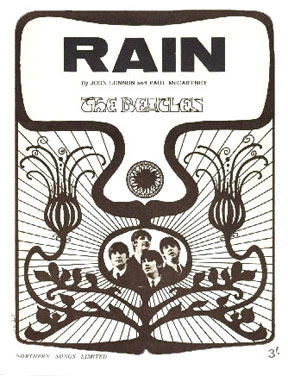 With five stagnated snare beats from Ringo, and a discernable voice that may be the “four” in the countdown of the rhythm track, a four-measure introduction vamps along nicely in the home key of G to set things in motion. All instrumentation comes in abruptly on the one-beat, including the very fragrant guitar leads from George, the excellent overdubbed bass lines from McCartney, and the four-in-the-bar tambourine hits from Ringo. The fourth measure, however, brings a temporary halt to the groove while Ringo performs a transitional snare drum roll to usher in the first verse. With five stagnated snare beats from Ringo, and a discernable voice that may be the “four” in the countdown of the rhythm track, a four-measure introduction vamps along nicely in the home key of G to set things in motion. All instrumentation comes in abruptly on the one-beat, including the very fragrant guitar leads from George, the excellent overdubbed bass lines from McCartney, and the four-in-the-bar tambourine hits from Ringo. The fourth measure, however, brings a temporary halt to the groove while Ringo performs a transitional snare drum roll to usher in the first verse.
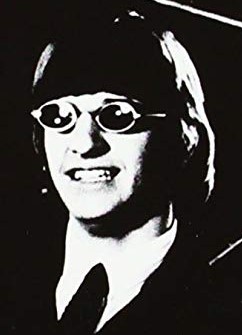 The first nine-measure verse features the identical instrumental vibe as heard in the intro except for Ringo playing only on the two- and four-beats with his tambourine. Ringo appears to already be having a field day on the drum kit, executing four drum breaks in the first verse alone. His second drum break, which appears in the fourth measure, has him showing off his “starting a break by hitting the hi-hat first” trick, something he actually debuted the year before in the song “Wait.” John sings solo on this first verse, single-tracked but with obvious ADT applied. The first nine-measure verse features the identical instrumental vibe as heard in the intro except for Ringo playing only on the two- and four-beats with his tambourine. Ringo appears to already be having a field day on the drum kit, executing four drum breaks in the first verse alone. His second drum break, which appears in the fourth measure, has him showing off his “starting a break by hitting the hi-hat first” trick, something he actually debuted the year before in the song “Wait.” John sings solo on this first verse, single-tracked but with obvious ADT applied.
 Verse two is identical in most ways, the main difference being the appearance of John, Paul and George’s background harmony vocals “when the sun shines down.” This line is sung twice in the gaps Lennon leaves in the lead vocal, but then harmonized with the lead vocals on the final line of the verse “sun shines.” Ringo experiments away by taking three drum breaks this time around, the third one inadvertently extending the ninth measure to 6/4 instead of 4/4 but is kept in the final product to give a somewhat disorienting feel. The rest of the group work around this flub in an apparent show of solidarity. Ringo, after all, was enjoying a ‘shining moment’ in this song as I’m sure they were all very much aware. Verse two is identical in most ways, the main difference being the appearance of John, Paul and George’s background harmony vocals “when the sun shines down.” This line is sung twice in the gaps Lennon leaves in the lead vocal, but then harmonized with the lead vocals on the final line of the verse “sun shines.” Ringo experiments away by taking three drum breaks this time around, the third one inadvertently extending the ninth measure to 6/4 instead of 4/4 but is kept in the final product to give a somewhat disorienting feel. The rest of the group work around this flub in an apparent show of solidarity. Ringo, after all, was enjoying a ‘shining moment’ in this song as I’m sure they were all very much aware.
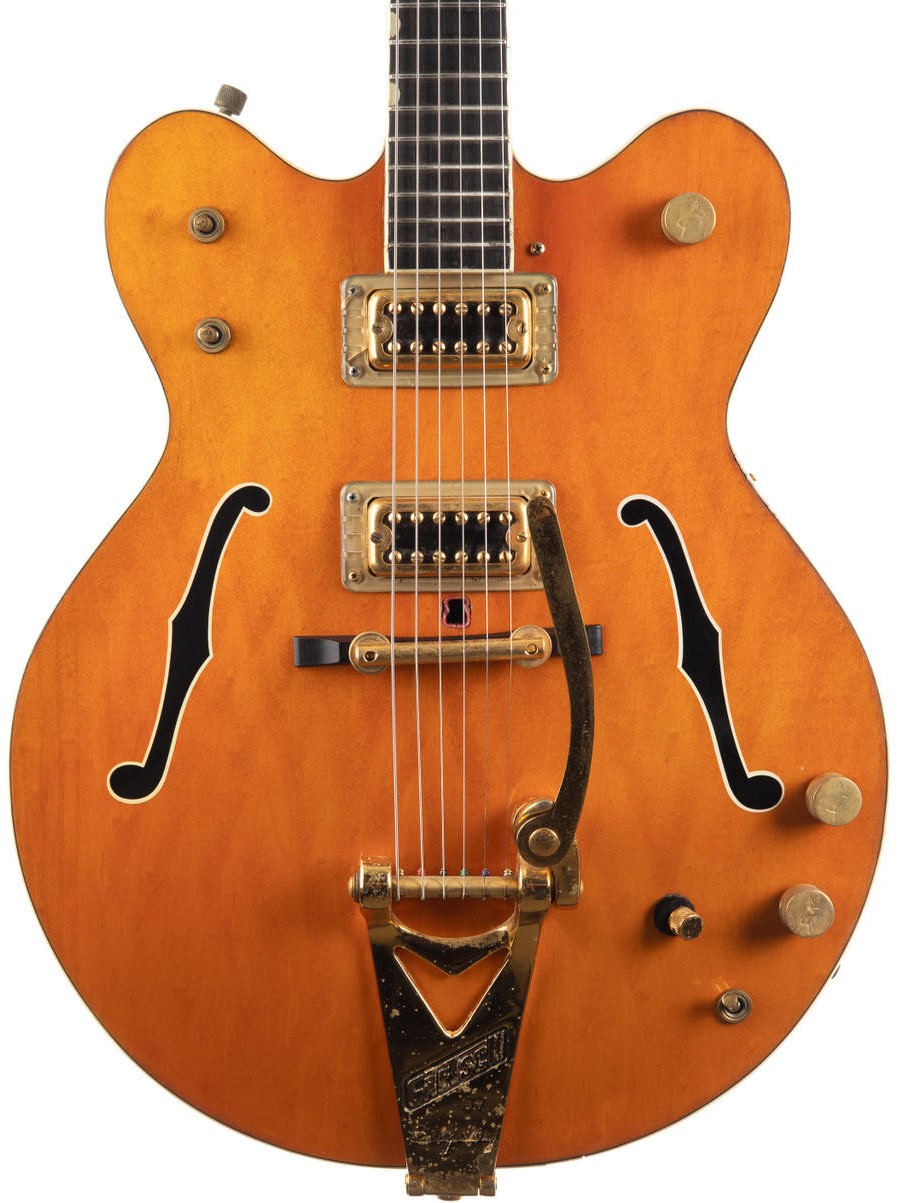 The first twelve-measure refrain then appears which changes the flow of the song dramatically. Instrumentally, the guitars simply strum the appropriate guitar chords on the half beats while the bass throbs a G note high up on the neck on the quarter beats for the first four measures. The highlight, though, is John harmonizing with himself the stretched out lyric “Raaaaaaaaaaain…I don’t mind.” As he’s finishing this line in the fourth measure, Ringo gradually comes in with a snare roll to usher back in the relaxed groove of the song, the usual pattern of guitar vamping and bass work rounding out the fifth and sixth measures. The whole process is then repeated again against the lyric “Shiiiiiiiiiiine…the weather’s fine.” All the while, the tambourine keeps plodding away on the two- and four-beats. The first twelve-measure refrain then appears which changes the flow of the song dramatically. Instrumentally, the guitars simply strum the appropriate guitar chords on the half beats while the bass throbs a G note high up on the neck on the quarter beats for the first four measures. The highlight, though, is John harmonizing with himself the stretched out lyric “Raaaaaaaaaaain…I don’t mind.” As he’s finishing this line in the fourth measure, Ringo gradually comes in with a snare roll to usher back in the relaxed groove of the song, the usual pattern of guitar vamping and bass work rounding out the fifth and sixth measures. The whole process is then repeated again against the lyric “Shiiiiiiiiiiine…the weather’s fine.” All the while, the tambourine keeps plodding away on the two- and four-beats.
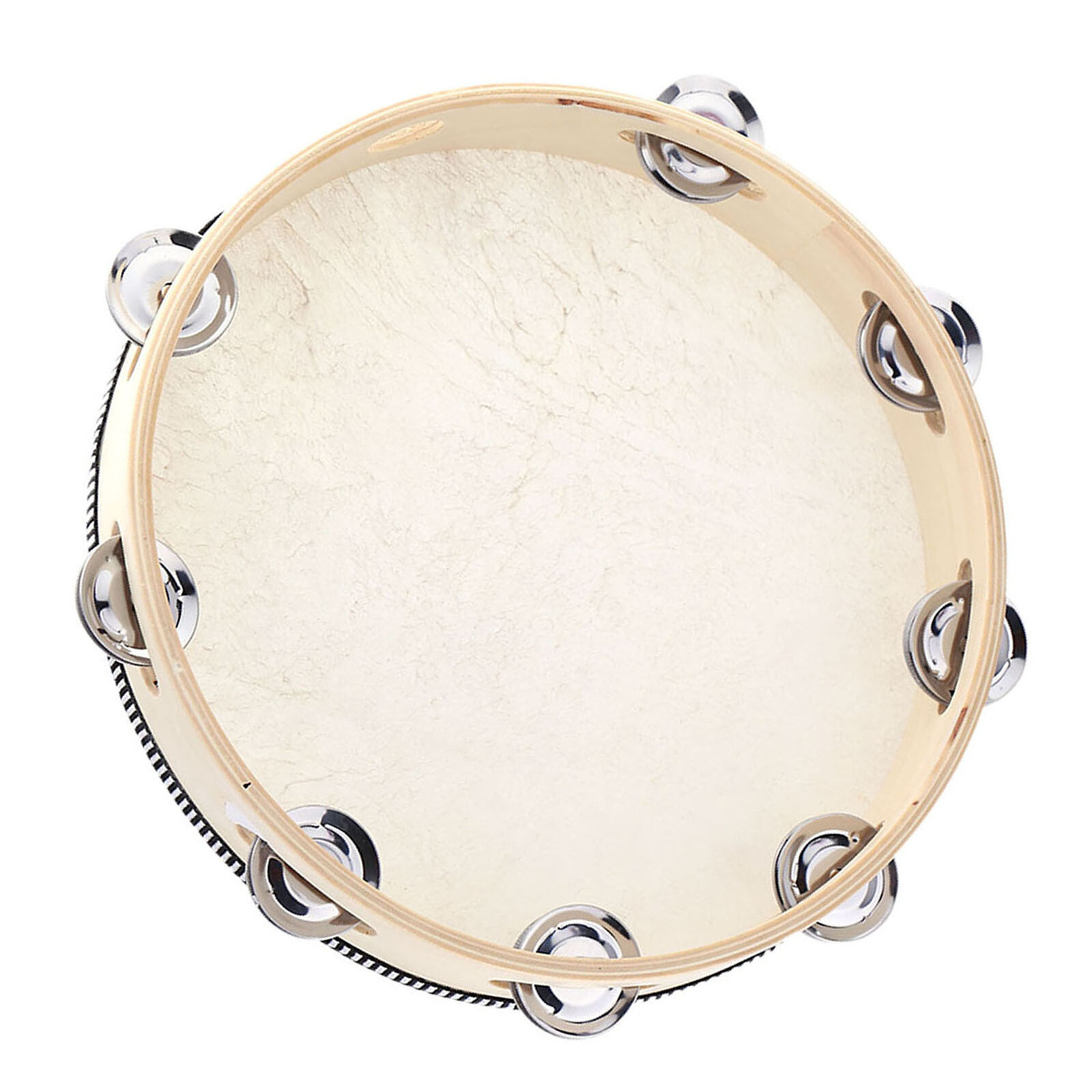 After a simple drum break the third verse begins, which is nearly identical musically except for the tambourine shifting to a shaking eighth-beat rhythm throughout. The harmony answering lines this time around are “when the rain comes down” while the background vocalists chime in with the lead vocals on “show you.” Ringo tones down his drum break experiments for this verse, only two being delivered. After a simple drum break the third verse begins, which is nearly identical musically except for the tambourine shifting to a shaking eighth-beat rhythm throughout. The harmony answering lines this time around are “when the rain comes down” while the background vocalists chime in with the lead vocals on “show you.” Ringo tones down his drum break experiments for this verse, only two being delivered.
 The repeat of the refrain is next, the only differences from the first being the high triplet work of Paul’s overdubbed bass and Ringo’s snare fills veering to the toms toward the end during measures one through four and seven through ten. The repeat of the refrain is next, the only differences from the first being the high triplet work of Paul’s overdubbed bass and Ringo’s snare fills veering to the toms toward the end during measures one through four and seven through ten.
With the eighth-beat shaking of the tambourine still heard, the final verse begins, Ringo putting in two drum breaks this time as well. The backing harmonies chime in with “when it rains and shines” in the gaps and then “can you hear me” with John as the final verse ends.
 Then in what appears as quite possibly an afterthought, the song abruptly stops as if we’re done. But if you keep time with the beat, you’ll see that the meanderings of the drum beats and overdubbed bass notes are perfectly in time and are the first three measures of what becomes a sixteen-measure conclusion to the song. George alters his guitar vamping way down on the bass notes of his guitar as the sixth measure ushers in the reversed Lennon vocal “when the rain comes they run and hide their heads.” Just as this is ending, John, Paul and George display falsetto harmonies on the word “rain.” The lead vocal then appears with a backward playing of the word “rain” from one of the refrains while the falsetto harmonies crash in again as a backdrop. As the song fades away, one final reversed lead vocal, reportedly “when the sun shines,” is heard. All the while, Ringo flails away with a drum break at the end of every other measure. Then in what appears as quite possibly an afterthought, the song abruptly stops as if we’re done. But if you keep time with the beat, you’ll see that the meanderings of the drum beats and overdubbed bass notes are perfectly in time and are the first three measures of what becomes a sixteen-measure conclusion to the song. George alters his guitar vamping way down on the bass notes of his guitar as the sixth measure ushers in the reversed Lennon vocal “when the rain comes they run and hide their heads.” Just as this is ending, John, Paul and George display falsetto harmonies on the word “rain.” The lead vocal then appears with a backward playing of the word “rain” from one of the refrains while the falsetto harmonies crash in again as a backdrop. As the song fades away, one final reversed lead vocal, reportedly “when the sun shines,” is heard. All the while, Ringo flails away with a drum break at the end of every other measure.
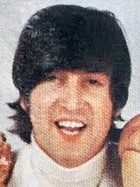 John comes across as the main player on “Rain,” his electric rhythm guitar working nicely in the relaxed mix of the song. Also, his lead and harmony vocals use a slow melodic slide undoubtedly influenced by the group’s recent infatuation with Eastern music. Coupling this with his backwards vocals in the closing moments of the song, it’s no wonder that he himself exclaimed, “It sounds as if I’m singing Indian.” John comes across as the main player on “Rain,” his electric rhythm guitar working nicely in the relaxed mix of the song. Also, his lead and harmony vocals use a slow melodic slide undoubtedly influenced by the group’s recent infatuation with Eastern music. Coupling this with his backwards vocals in the closing moments of the song, it’s no wonder that he himself exclaimed, “It sounds as if I’m singing Indian.”
 Paul asserts that he, as well as the others, played an important role in making the song what it became, and this is definitely not contested. His bass playing is stellar and "in your face," possibly considered by some to be the actual lead instrument of the piece. Paul's harmony vocals, along with George's, fit perfectly alongside John’s lead, as do Harrison’s meandering guitar passages. And, as stated earlier, Ringo shines like never before. For someone who’s gone on record as saying he despises drum solos, he definitely made an exception while recording this track. Paul asserts that he, as well as the others, played an important role in making the song what it became, and this is definitely not contested. His bass playing is stellar and "in your face," possibly considered by some to be the actual lead instrument of the piece. Paul's harmony vocals, along with George's, fit perfectly alongside John’s lead, as do Harrison’s meandering guitar passages. And, as stated earlier, Ringo shines like never before. For someone who’s gone on record as saying he despises drum solos, he definitely made an exception while recording this track.
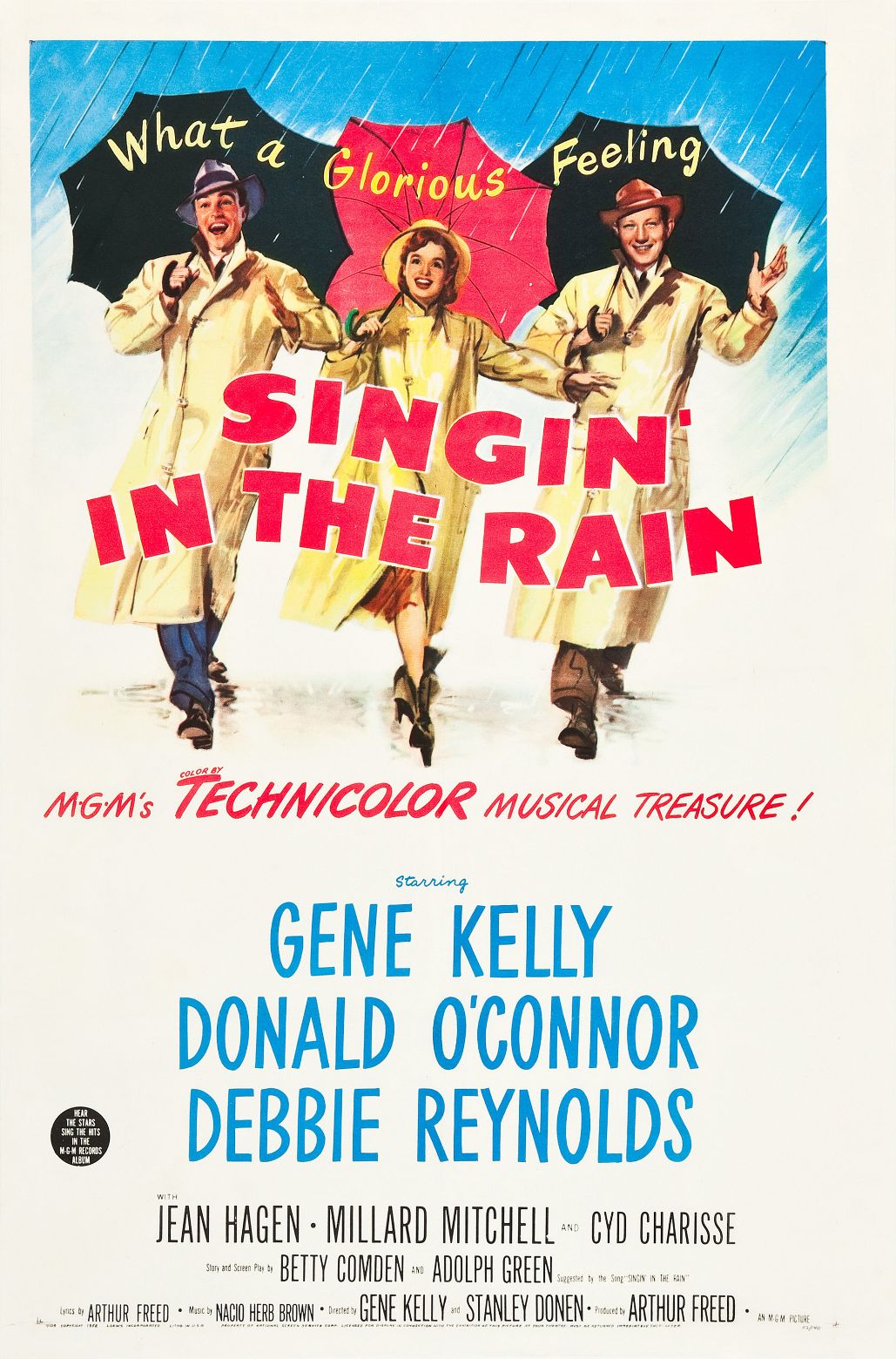 On the surface, the song contains simple statements about how people react to the weather; they “run and hide their heads” when it rains and “they slip into the shade and sip their lemonade” when it’s sunny. But the evidence of an altered perception of reality creeps in with the intention of John being the educator. “I can show you,” he insists, that when it rains “everything’s the same.” He then senses that his "square" listeners aren’t getting it, as he impatiently asks, “can you hear me?” His overall message is that “it’s just a state of mind” anyway. If you think being rained on is unpleasant, then it’s unpleasant. If you view it like Gene Kelly, then that will be your experience. It’s all in the mind! Pretty deep stuff. On the surface, the song contains simple statements about how people react to the weather; they “run and hide their heads” when it rains and “they slip into the shade and sip their lemonade” when it’s sunny. But the evidence of an altered perception of reality creeps in with the intention of John being the educator. “I can show you,” he insists, that when it rains “everything’s the same.” He then senses that his "square" listeners aren’t getting it, as he impatiently asks, “can you hear me?” His overall message is that “it’s just a state of mind” anyway. If you think being rained on is unpleasant, then it’s unpleasant. If you view it like Gene Kelly, then that will be your experience. It’s all in the mind! Pretty deep stuff.
He even gets a little morbid in his depiction of this unenlightened society, saying that since they run inside when it’s raining “they might as well be dead.” Instead, they should all be like him: “Rain?…I don’t mind – Shine?...the weather’s fine.”
 US single picture sleeve
|
American Releases
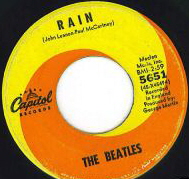 May 30th, 1966, became the early US release date (June 10th in the UK) of “Rain” as the b-side of the hit single “Paperback Writer.” This is not to say that nobody noticed this innovative b-side. Enough disc jockeys turned the record over to give “Rain” airplay for the song to score a #23 position on the Billboard Hot 100. May 30th, 1966, became the early US release date (June 10th in the UK) of “Rain” as the b-side of the hit single “Paperback Writer.” This is not to say that nobody noticed this innovative b-side. Enough disc jockeys turned the record over to give “Rain” airplay for the song to score a #23 position on the Billboard Hot 100.
The first album to contain the song, and therefore the first stereo release, was “Hey Jude” (originally titled “The Beatles Again”). This was released on February 26th, 1970 and was the fourth American Beatles album on Apple Records. A #2 placing on the Billboard album chart for a compilation release was not too shabby. This album received a compact disc release on January 21st, 2014.
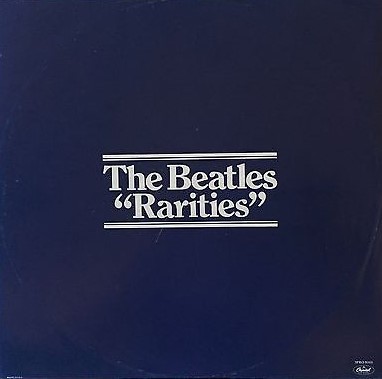 Because of EMI's decision to release a box set that included all of the British Beatles albums as well as an additional album entitled "Rarities" that included songs that did not appear on any British Beatles album, Capitol had initially decided to release this album in America. 2,000 promotional copies of this album were manufactured (#SPRO-8969) and then another unlimited number of advance copies (ESN-SN-12009) were printed in the fall of 1979. "Rain" was included on this proposed album which was decided to be abondoned due to the fact that this and most of the songs contained therein were available on other Beatles albums in the US at the time. These promotional albums are very collectible today. Because of EMI's decision to release a box set that included all of the British Beatles albums as well as an additional album entitled "Rarities" that included songs that did not appear on any British Beatles album, Capitol had initially decided to release this album in America. 2,000 promotional copies of this album were manufactured (#SPRO-8969) and then another unlimited number of advance copies (ESN-SN-12009) were printed in the fall of 1979. "Rain" was included on this proposed album which was decided to be abondoned due to the fact that this and most of the songs contained therein were available on other Beatles albums in the US at the time. These promotional albums are very collectible today.
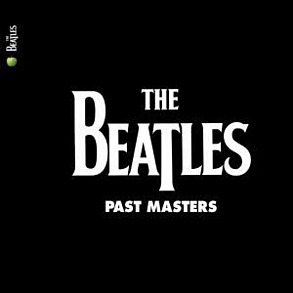 The compact disc era included “Rain” on a new compilation entitled “Past Masters, Volume Two.” The original release of this CD was on March 7th, 1988, while both "Past Masters" volumes were combined as a double-album for the US vinyl release on October 24th, 1988. A remastered version of this double-album came out as a 2-CD set on September 9th, 2009 and on vinyl on November 12th, 2012. The compact disc era included “Rain” on a new compilation entitled “Past Masters, Volume Two.” The original release of this CD was on March 7th, 1988, while both "Past Masters" volumes were combined as a double-album for the US vinyl release on October 24th, 1988. A remastered version of this double-album came out as a 2-CD set on September 9th, 2009 and on vinyl on November 12th, 2012.
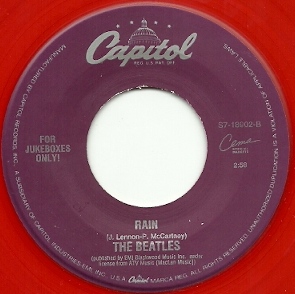 The vinyl single may have been available through the years, but a special release came out on the Capitol Cema Series “For Jukeboxes Only” on January 24th, 1996. This red vinyl single is quite the find today. The vinyl single may have been available through the years, but a special release came out on the Capitol Cema Series “For Jukeboxes Only” on January 24th, 1996. This red vinyl single is quite the find today.
An interesting note is that a quick snippet of the final backward vocal passage “Rain” is heard in the final moments of the composite track “Within You Without You / Tomorrow Never Knows” featured on the album "Love" that was released on November 20th, 2006, this being the soundtrack to the Cirque du Soleil show of the same name.
 For those of you who agree with engineer Geoff Emerick that “Rain” should really only be experienced in mono, the remastered box set “The Beatles In Mono” contains the slightly elongated single version on a CD titled “Mono Masters.” This box set was released on CD on September 9th, 2009, the vinyl edition coming out on September 9th, 2014. For those of you who agree with engineer Geoff Emerick that “Rain” should really only be experienced in mono, the remastered box set “The Beatles In Mono” contains the slightly elongated single version on a CD titled “Mono Masters.” This box set was released on CD on September 9th, 2009, the vinyl edition coming out on September 9th, 2014.
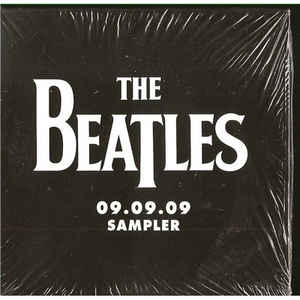 Also released on September 9th, 2009, this being in promotion of the remastered Beatles catalog, a CD titled "09.09.09 Sampler" was distributed to retailers and radio programmers, "Rain" being featured therein. This has become quite the find for collectors. Also released on September 9th, 2009, this being in promotion of the remastered Beatles catalog, a CD titled "09.09.09 Sampler" was distributed to retailers and radio programmers, "Rain" being featured therein. This has become quite the find for collectors.
In promotion of the 2014 box set "The US Albums," a 25-song sampler CD was manufactured for limited release on January 21st, 2014, this disc containing the stereo mix of "Rain."
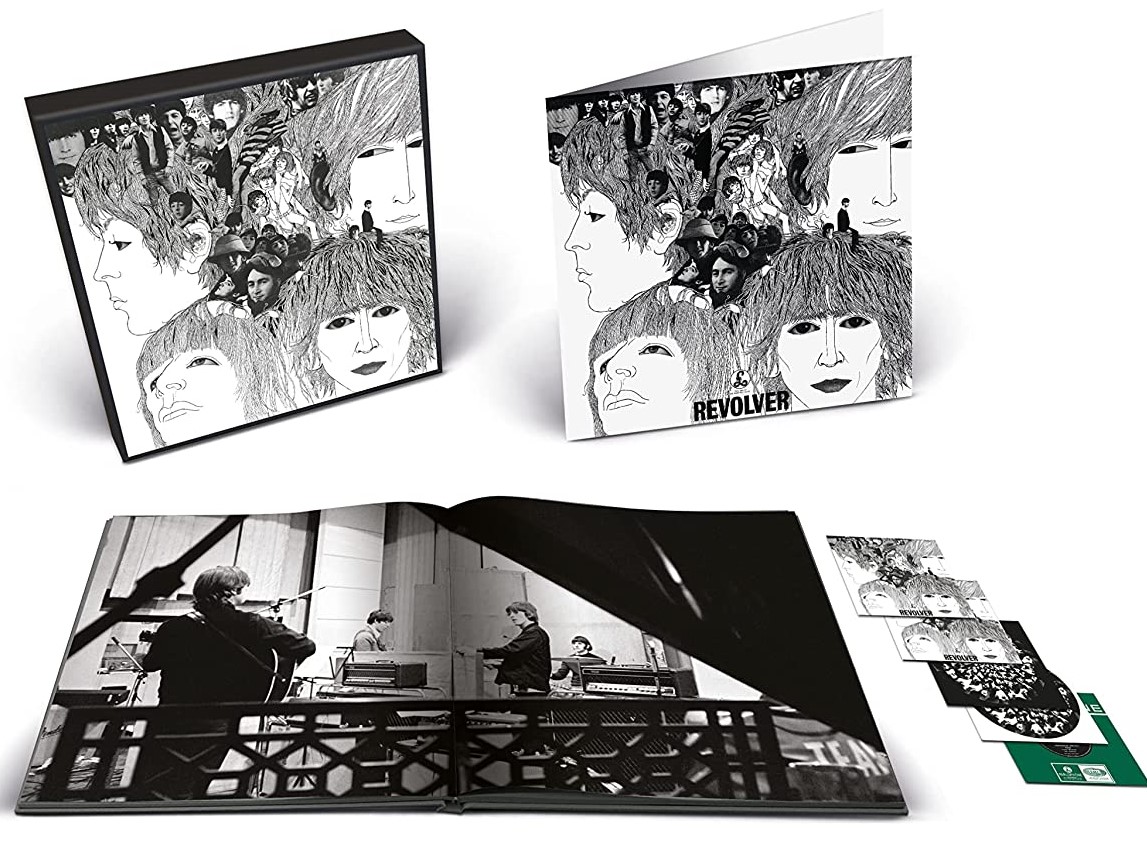 A vibrant new Giles Martin mix of "Rain" is featured on the "Special Edition Deluxe 2CD Set" of “Revolver,” which was released on October 28th, 2022. This is also featured on the "Deluxe Edition," which is available as a 5 CD box set and a 4LP / 1 EP box set, as well as "Take 5" as they recorded it in the studio in 1966, "Take 5 - Slowed down for master tape," and the original mono mix. A vibrant new Giles Martin mix of "Rain" is featured on the "Special Edition Deluxe 2CD Set" of “Revolver,” which was released on October 28th, 2022. This is also featured on the "Deluxe Edition," which is available as a 5 CD box set and a 4LP / 1 EP box set, as well as "Take 5" as they recorded it in the studio in 1966, "Take 5 - Slowed down for master tape," and the original mono mix.
Live Performances
While The Beatles never actually performed “Rain” on a concert stage, they did create three promo films for the song and even lip-synced it live for British television.
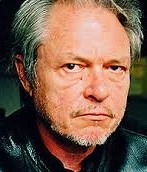 The first two promos were shot on May 19th, 1966 in EMI Studio One, these being done to forgo personal appearances on TV shows at home and abroad while still using this platform to promote their latest single. Director Michael Lindsay-Hogg was brought in to oversee seven clips made on this day (four for “Paperback Writer” and three for “Rain”), this being the first of many occasions he was to work with the group, the most noteworthy being the 1970 released film “Let It Be.” The first two promos were shot on May 19th, 1966 in EMI Studio One, these being done to forgo personal appearances on TV shows at home and abroad while still using this platform to promote their latest single. Director Michael Lindsay-Hogg was brought in to oversee seven clips made on this day (four for “Paperback Writer” and three for “Rain”), this being the first of many occasions he was to work with the group, the most noteworthy being the 1970 released film “Let It Be.”
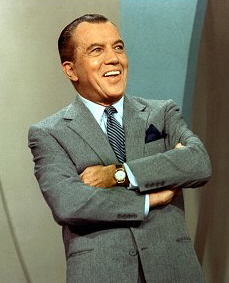 After some rehearsals beginning at 10 am, the first clip of the day began at 10:40, this being a color “Rain” video destined specifically for the American “Ed Sullivan Show.” With all guitarists standing on risers, this was a pretty straightforward mimed performance, McCartney faking the harmony vocals that John performs in the recording during the refrains. John even mouths the backward word “rain” in the final moments of the song. Both this and a color promo of “Paperback Writer” were broadcast on Ed Sullivan’s show on June 5th of that year. After some rehearsals beginning at 10 am, the first clip of the day began at 10:40, this being a color “Rain” video destined specifically for the American “Ed Sullivan Show.” With all guitarists standing on risers, this was a pretty straightforward mimed performance, McCartney faking the harmony vocals that John performs in the recording during the refrains. John even mouths the backward word “rain” in the final moments of the song. Both this and a color promo of “Paperback Writer” were broadcast on Ed Sullivan’s show on June 5th of that year.
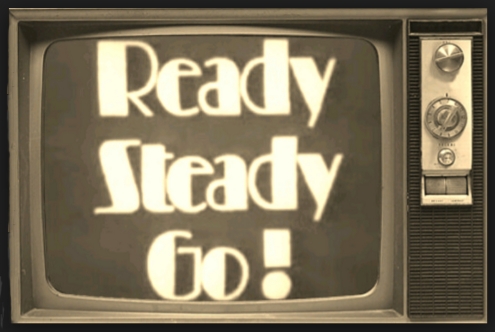 The second video of “Rain” shot on this day was destined for the British TV show “Ready Steady Go” and was made in black-and-white since British television was yet to make the switch to color broadcasting (which occurred 18 months later). This promotional film was shot sometime between 3:30 and 6:10 pm on this day, this being yet another straightforward performance video. John, Paul and George were no longer on risers, but the comical element here is Lennon’s loose attempt at miming the entire backwards vocal passage frontwards for the cameras. The clip was first shown on June 3rd, 1966. The second video of “Rain” shot on this day was destined for the British TV show “Ready Steady Go” and was made in black-and-white since British television was yet to make the switch to color broadcasting (which occurred 18 months later). This promotional film was shot sometime between 3:30 and 6:10 pm on this day, this being yet another straightforward performance video. John, Paul and George were no longer on risers, but the comical element here is Lennon’s loose attempt at miming the entire backwards vocal passage frontwards for the cameras. The clip was first shown on June 3rd, 1966.
 The third promo filmed for “Rain” was done the next day, May 20th, 1966, in the luxurious surroundings of Chiswick House in London. This color video was also directed by Michael Lindsay-Hogg but was first shown in black-in-white on the British program “Top Of The Pops” (on June 9th, 1966). They obviously felt that this vibrant colorful video would stand the test of time and be appreciated in years to come. The third promo filmed for “Rain” was done the next day, May 20th, 1966, in the luxurious surroundings of Chiswick House in London. This color video was also directed by Michael Lindsay-Hogg but was first shown in black-in-white on the British program “Top Of The Pops” (on June 9th, 1966). They obviously felt that this vibrant colorful video would stand the test of time and be appreciated in years to come.
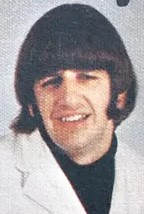 The format used here was much more of an MTV harbinger, including shots of the group walking around the enclosed walled garden, sitting on park benches, and reclining on a branch of a cedar tree as well as mimed performances with their instruments (except for Ringo who tried hard to act inconspicuous despite their being no drums around). A very interesting element here is a group of children who appear behind a locked gate at the beginning of the video and apparently find a way in later, they being spotted and focused on by cameramen later in the background of a group performance shot. The format used here was much more of an MTV harbinger, including shots of the group walking around the enclosed walled garden, sitting on park benches, and reclining on a branch of a cedar tree as well as mimed performances with their instruments (except for Ringo who tried hard to act inconspicuous despite their being no drums around). A very interesting element here is a group of children who appear behind a locked gate at the beginning of the video and apparently find a way in later, they being spotted and focused on by cameramen later in the background of a group performance shot.
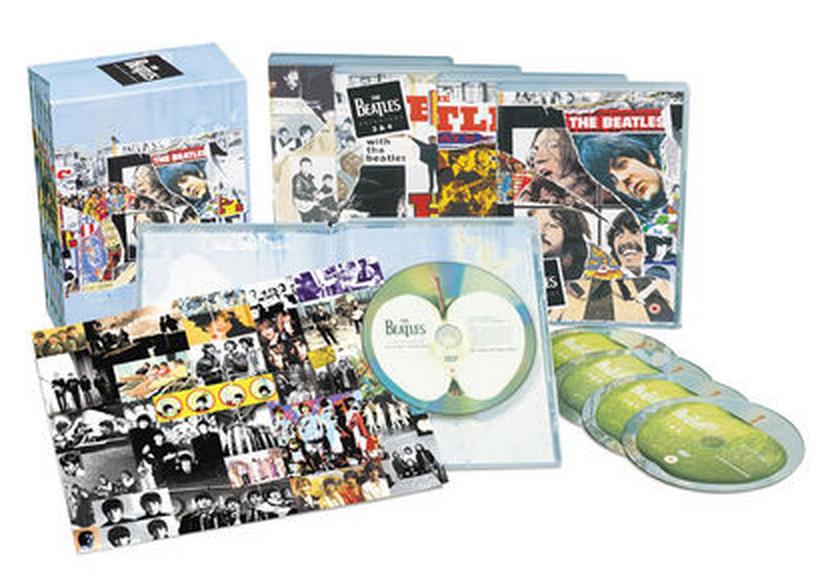 Despite popular opinion, the video sequence of “Rain” as seen in the 1995 “Anthology” TV documentary is actually a director's cut with splices of unused footage and scenes from the EMI footage of the previous day; therefore, this is not the actual video as imaginatively put together in 1966 by Michael Lindsay-Hogg. Despite popular opinion, the video sequence of “Rain” as seen in the 1995 “Anthology” TV documentary is actually a director's cut with splices of unused footage and scenes from the EMI footage of the previous day; therefore, this is not the actual video as imaginatively put together in 1966 by Michael Lindsay-Hogg.
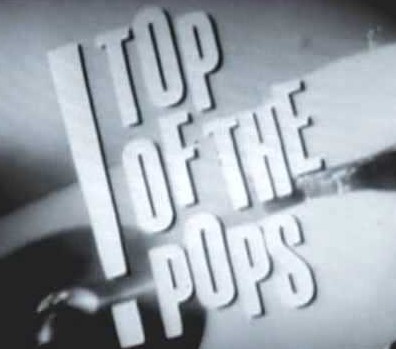 Even though The Beatles swore off actual television performances, they made one exception (via a plea from producer Johnnie Stewart) and lip-synced both sides of their latest single live in the studio for the British show “Top Of The Pops.” "I think you will agree that 'Top Of The Pops,' is generally accepted as the Number One pop show," Johnnie Stewart wrote in a letter to Beatles' manager Brian Epstein, "and yet is almost the only show of its kind in which the group has not yet appeared in person." He thereby promised "every facility to make such an appearance as quick and easy as possible." They aired the Chiswick films the week before, but Stewart said the fans demanded more. Even though The Beatles swore off actual television performances, they made one exception (via a plea from producer Johnnie Stewart) and lip-synced both sides of their latest single live in the studio for the British show “Top Of The Pops.” "I think you will agree that 'Top Of The Pops,' is generally accepted as the Number One pop show," Johnnie Stewart wrote in a letter to Beatles' manager Brian Epstein, "and yet is almost the only show of its kind in which the group has not yet appeared in person." He thereby promised "every facility to make such an appearance as quick and easy as possible." They aired the Chiswick films the week before, but Stewart said the fans demanded more.
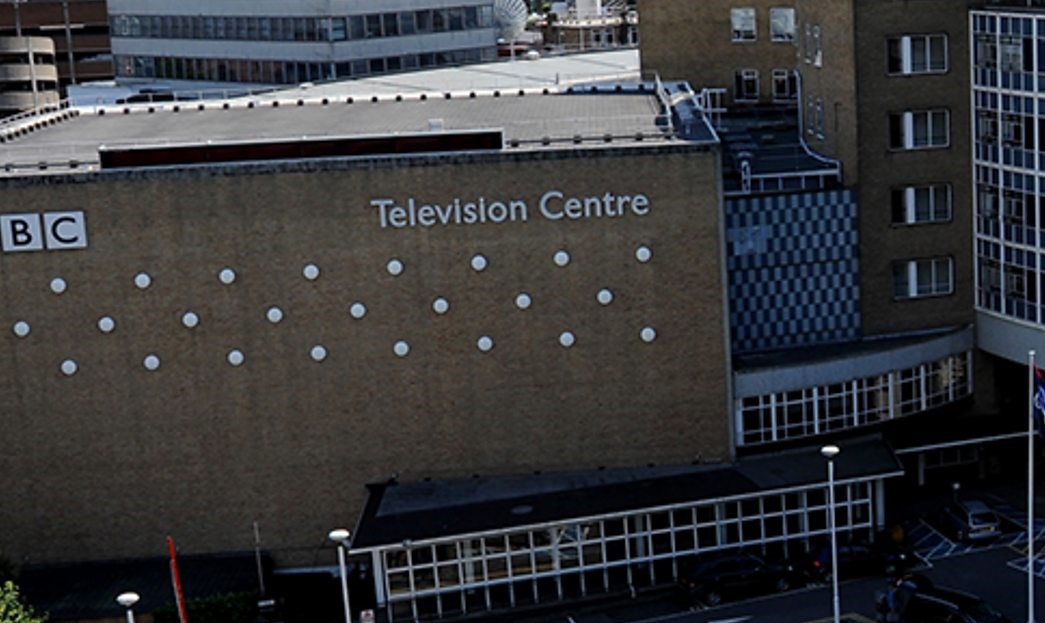 The group agreed to do it and arrived at Studio Two, Television Centre in London at 2:30 pm on June 16th for rehearsals and then, from 7:30 to 8:00 pm, the program aired live with the group closing the show. The group performed “Rain” first, then “Paperback Writer,” and then off to EMI Studios for more work on one of the final tracks for the “Revolver” album, this being “Here, There And Everywhere.” As for the actual lip-synced performance, it is said to have been destroyed or recorded over and therefore cannot be seen today. One can only wonder how John did with miming his backwards vocals on live television! The group agreed to do it and arrived at Studio Two, Television Centre in London at 2:30 pm on June 16th for rehearsals and then, from 7:30 to 8:00 pm, the program aired live with the group closing the show. The group performed “Rain” first, then “Paperback Writer,” and then off to EMI Studios for more work on one of the final tracks for the “Revolver” album, this being “Here, There And Everywhere.” As for the actual lip-synced performance, it is said to have been destroyed or recorded over and therefore cannot be seen today. One can only wonder how John did with miming his backwards vocals on live television!
Conclusion
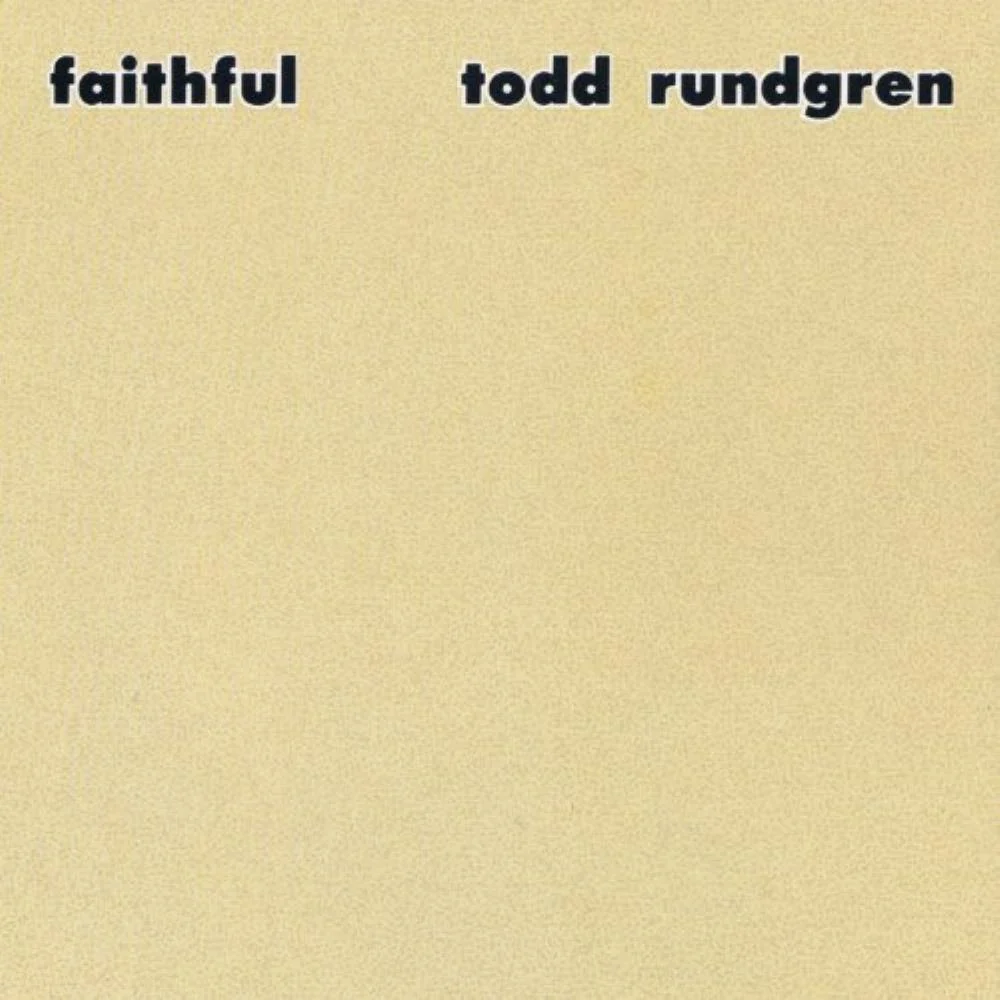 In reference to the song “Rain,” John Lennon stated in 1980: “That one was the gift of God – of Jah, actually, the god of marijuana. Jah gave me that one.” As to whether Jah is the “god of marijuana,” I can’t say. One thing I do know is that this song is definitely a gift to Beatles’ fans everywhere; on the definite list of highly respected tracks in the entire Beatles catalog. The song's irresistible melody, before-its-time psychedelic feel, and commanding but charming Lennon vocal put it in a league of its own. The numerous cover versions done throughout the years, most notably the 1976 Todd Rundgren version, pay delicious tribute to this one-of-a-kind piece of rock art. In reference to the song “Rain,” John Lennon stated in 1980: “That one was the gift of God – of Jah, actually, the god of marijuana. Jah gave me that one.” As to whether Jah is the “god of marijuana,” I can’t say. One thing I do know is that this song is definitely a gift to Beatles’ fans everywhere; on the definite list of highly respected tracks in the entire Beatles catalog. The song's irresistible melody, before-its-time psychedelic feel, and commanding but charming Lennon vocal put it in a league of its own. The numerous cover versions done throughout the years, most notably the 1976 Todd Rundgren version, pay delicious tribute to this one-of-a-kind piece of rock art.
Song Summary
“Rain”
Written by: John Lennon / Paul McCartney
-
Song Written: March, 1966
-
Song Recorded: April 14 and 16, 1966
-
First US Release Date: May 30, 1966
-
US Single Release: Capitol #5651
-
Highest Chart Position: #23
-
First US Album Release: Apple #SW-385 (SO-385) “Hey Jude” (“The Beatles Again”)
-
British Album Release: Parlophone #PCM 1001“Rarities”
-
Length: 2:59 (mono) 2:57 (stereo)
-
Key: G major
-
Producer: George Martin
-
Engineers: Geoff Emerick, Phil McDonald
Instrumentation (most likely):
-
John Lennon - Lead and Harmony Vocals, Rhythm Guitar (1962 Gretsch 6120)
-
Paul McCartney - Bass Guitar (1964 Rickenbacker 4001S), backing vocals
-
George Harrison - Lead Guitar (1964 Gibson SG Standard), backing vocals
-
Ringo Starr – Drums (1964 Ludwig Super Classic Black Oyster Pearl), tambourine
Written and compiled by Dave Rybaczewski
|
IF YOU WOULD LIKE TO MAKE A DONATION TO KEEP THIS WEBSITE UP AND RUNNING, PLEASE CLICK BELOW!
Sign Up Below for our MONTHLY BEATLES TRIVIA QUIZ!
|